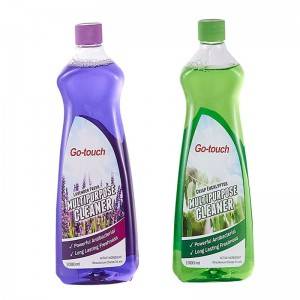Today, a variety of cleaners and disinfectants on the market are emerging in an endless stream, and they are constantly entering our homes and becoming indispensable daily necessities for people. However, we also often see media reports that household poisoning incidents have occurred frequently due to improper use of cleaners and disinfectants. Therefore, how to use household cleaners and disinfectants correctly is related to people’s health problems.
Recently, many people do not know much about the characteristics of disinfectants and Go-touch 1000ml Disinfectant Cleaner and how to use them. In order to avoid damage to people or objects caused by improper use of disinfectants, we should come to know some common household cleaners and disinfectants.
The most widely used surfactants in the family are divided into cationic surfactants, anionic surfactants and so on. Xinjieermin, conditioners, fabric softeners, etc. belong to cationic surfactants, and detergents, detergents, soaps, etc. belong to anionic surfactants. When using surfactants, they should not be used in combination, because the combination of cationic surfactants and anionic surfactants not only produces resistance, but also reduces the disinfection effect.
The harm to spray disinfectants and cleaning agents should not be underestimated, because from a chemical point of view, the chemical components of such chemical products are complex, such as indiscriminate use, abuse, and cross-use, which can produce some unpredictable chemical reactions and pollute the environment.
From the perspective of human physiology, most of the artificially synthesized fragrances contain volatile substances, and their harm to human organs, especially the stimulation of the respiratory system, is increasingly exposed. When the particle size of the aerosol mist is 5 microns, it can be inhaled into the alveoli, causing inflammation.
People with allergies can easily lead to allergic rhinitis, asthma, urticaria and other allergic diseases.
In addition, dish soap is only a surfactant, and after using it, it can only help to wash away bacteria, not kill them. On the contrary, it is also easily contaminated by bacteria, and some bacteria also use detergent as a nutrient base to accelerate their reproduction. Relevant Japanese scholars have repeatedly tested bacteria in liquid detergents used by ordinary households and food companies. It is surprising that more than 1 million bacteria were detected in an average of unopened detergents per milliliter.
Post time: Jan-24-2022






